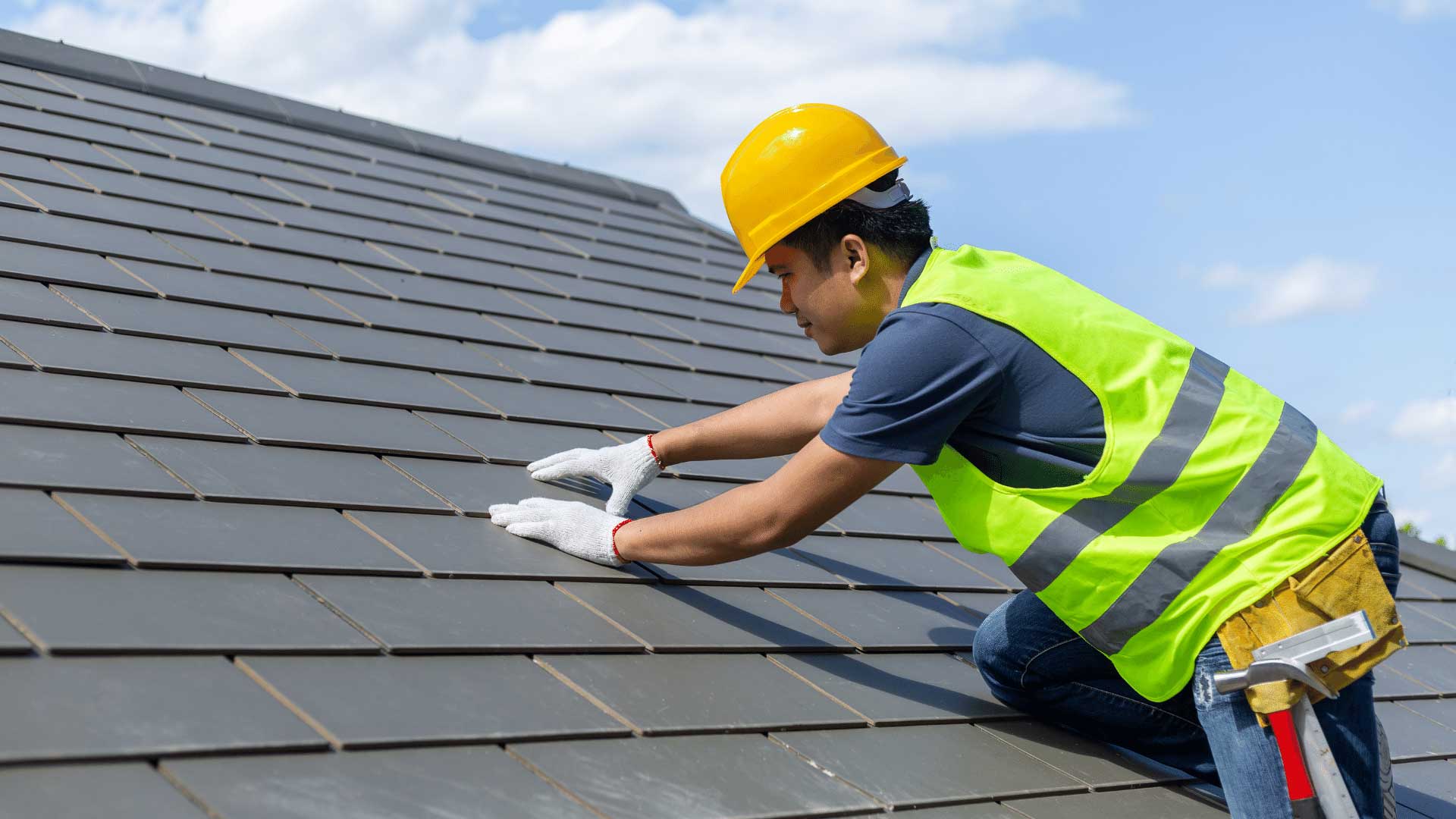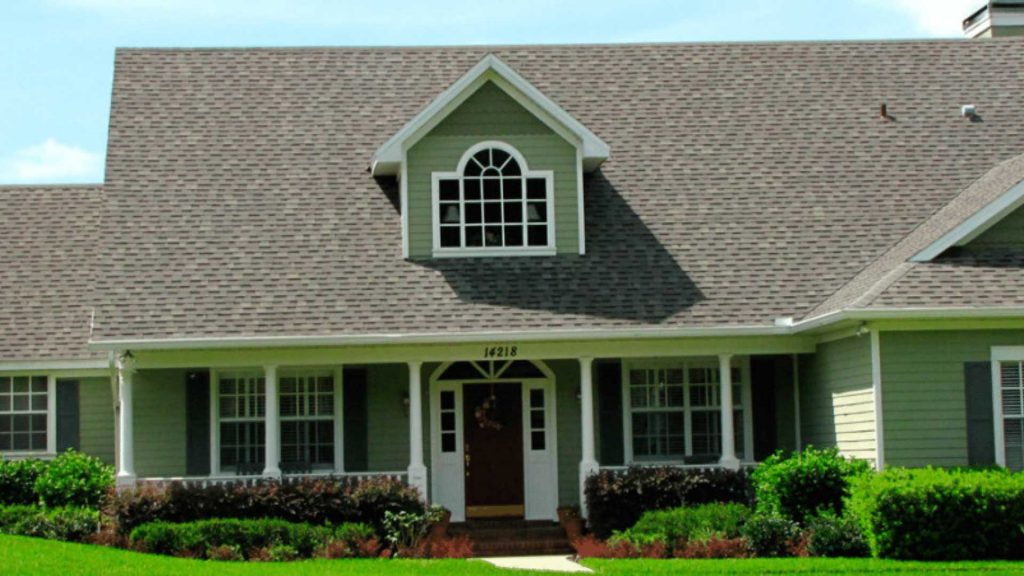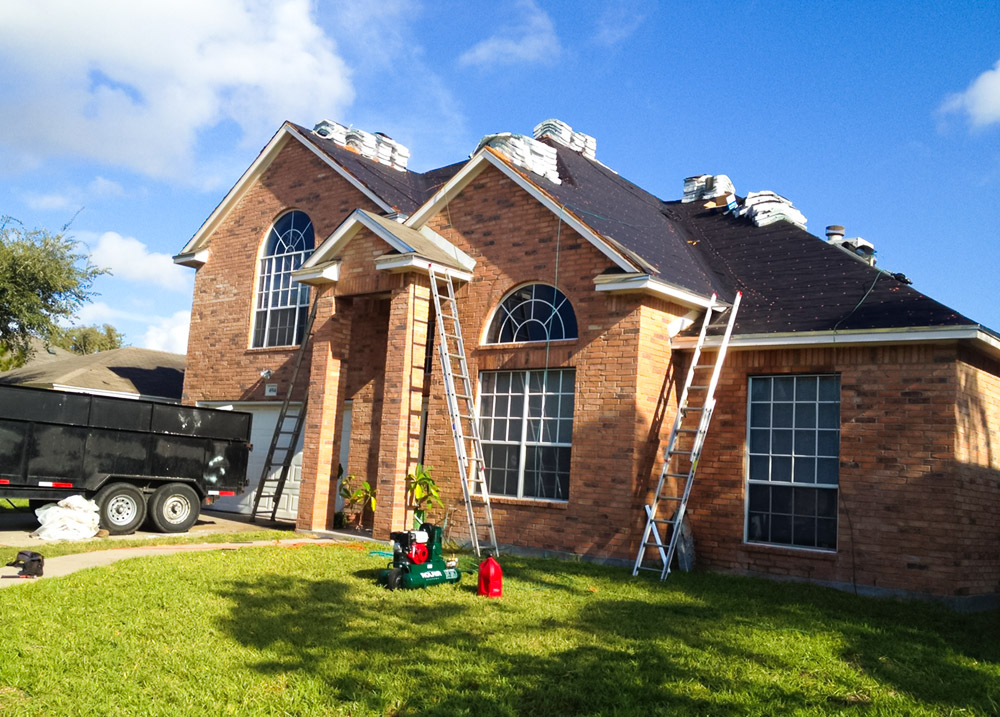Roofs are arguably one of the most important parts of a home or building. They provide protection from the elements, and must be kept in good condition to do their job properly. As such, it is extremely important for homeowners and property owners to know how to spot common roof problems, and address them quickly before they can become major issues. This article will provide an overview of some common roofing problems, as well as tips on how to identify and address these potential hazards.
The first step to addressing any potential roof issue is identifying what might be causing it in the first place. Common causes include age-related wear and tear, poor installation, severe weather conditions like hail storms or hurricanes, and more. These types of damage often manifest themselves through telltale signs that indicate whether roof repairs may be needed soon. For instance, missing shingles could indicate wind damage; water stains on ceilings could point towards a leaky roof; discolored patches on exterior walls could signal mold growth; etc.
Once any potential problem has been identified by visual inspection or other means, steps should then be taken to start rectifying the situation as soon as possible. Depending on the severity of the issue at hand, this may involve either performing minor DIY fixes oneself—like replacing a few shingles here or there—or calling upon professional services if larger scale repair work is necessary. In addition, regular maintenance should also be performed throughout the year in order to make sure the roof stays in tip-top shape over time.
Assessing Your Roof’s Condition
Assessing the condition of a roof is an important part to ensure its longevity. From spotting severe damage, to identifying small problems before they become major issues; there are several steps one can take when it comes to assessing their roof’s condition. By taking the time to do so, homeowners and property owners can better identify areas that need attention and prevent further damages from occurring in the future.
When starting out, it’s best to conduct a visual inspection of your roof from ground level first. This will give you an overall sense as to what kind of shape your roof is in by allowing you to spot any obvious signs of distress such as missing shingles or broken tiles. Also don’t forget about the flashing around chimneys and skylights – these should be inspected for corrosion or gaps which could lead to water leakage down the line.
For more detailed assessment, climbing onto your roof is necessary. When up on the surface, take note of any cracked caulk or rust spots on metal fixtures that may require repair or replacement. Checking for curled corners on asphalt shingles is another sign of wear-and-tear; if left unaddressed this could result in water infiltration into your home. Furthermore, make sure all gutters and drains are free from debris like leaves and twigs since blocked drainage systems can cause leaks over time too.
By following these basic guidelines while inspecting roofs, individuals can equip themselves with enough knowledge to address common problems effectively and determine whether professional help is needed. Ultimately, regular maintenance through careful observation is key for safeguarding against potential damages caused by weather conditions or aging materials – saving both money and stress in the long run.
Identifying Roof Leaks
When assessing the condition of one’s roof, it is important to identify any potential leaks. Leaks in a roof can cause significant damage if left untreated for long periods of time, and may need immediate attention from a professional. It is therefore essential that all homeowners be able to recognize when their roof has been compromised in this way.
The most common signs of a leak are water spots on walls, ceilings or floors; visible damp patches; stains along roofs edges; discoloration around nails or other fasteners; peeling paint near eaves; mold growth inside the home; musty odors coming from the attic space; and sagging sections of the roof. If any of these indicators are present, then further investigation should be conducted to confirm whether there is indeed a leak in the roofing system.
Once confirmed as having a leak, it is important to take action immediately by identifying its source and patching up any damaged areas to prevent further deterioration. Consulting with an experienced contractor is highly recommended so that they can provide expert advice on how best to repair or replace any affected material without causing additional harm.
Addressing Clogged Gutters
Clogged gutters are a common roof problem that can cause significant damage to both interior and exterior parts of the home. Gutters play an important role in channeling water away from homes, so when they become blocked with debris such as leaves and twigs, it is essential to address this issue quickly and efficiently.
To begin addressing clogged gutters on your roof, you should first:
* Inspect the gutter system for any blockages
* Look for leaf build-up along the edge of the gutter
* Check for nests or other objects obstructing the flow of water
* Take action to remove these blockages depending on the severity of the issue
* If there is minimal debris blocking the flow, use a garden hose to clean out any loose materials
* If there are larger items stuck inside, consider using a ladder or pressure washer to dislodge them
When dealing with clogged gutters, it is also important to inspect surrounding areas of your home that may be affected by pooling water due to improper drainage. This includes checking shingle overhangs around your roof’s edges and eaves as well as inspecting nearby gardens or walkways which could sustain long-term damage if not properly addressed. Taking time to assess all potential issues related to clogged gutters will help prevent further costly repairs down the road.
In order maintain optimal functioning of your roof’s gutter systems, regular inspection and maintenance will ensure that small problems don’t turn into big ones requiring professional attention later on. Keeping up with routine cleaning can save homeowners from expensive repair bills while preserving their home’s value at the same time.
Repairing Damaged Shingles
Damaged shingles are one of the most common roof problems, and they must be addressed promptly. Identifying damaged shingles is relatively easy; if a homeowner notices an area with missing or cracked shingle pieces, it indicates that the structure has been compromised. In some cases, other signs such as discoloring may also appear on adjacent shingles, which could indicate water damage.
When repairing damaged shingles, homeowners should ensure that all existing materials have been removed before any new materials are installed. This will help to prevent further deterioration and protect against future leaks or structural issues. Additionally, appropriate protective gear should be worn when performing repairs at height. Homeowners who do not feel comfortable replacing the entire roof system might want to consider hiring professionals for this job in order to guarantee quality workmanship and safety standards being met.
Once repair is complete, regular maintenance checks are important to keep up with potential damage caused by weather conditions or aging of roof components over time. A professional inspection every few years can greatly extend the life of any roof system while also providing peace of mind for homeowners about its condition.
Inspecting Flashing And Seals
Inspecting flashing and seals is a key part of roof maintenance. Flashing provides an extra layer of protection to the roof, preventing water from entering around chimneys, vent stacks, skylights and any other penetrations through the roof surface. Seals protect against air infiltration at these same points as well as along edges where sections meet. Both are integral in protecting your home from water damage and energy loss.
It is important to inspect all flashing and seals regularly for signs of wear or corrosion. Any broken or cracked surfaces should be replaced immediately with materials that match the existing material type – metal on metal, plastic on plastic etc. If you notice any tears, gaps or holes in the sealant of flashings it may also need replacing depending upon its severity.
Regularly checking for issues such as this can help you spot potential problems before they become costly repairs down the road. It’s best practice to have regular inspections done by qualified professionals who can assess if further action needs to be taken. Keeping up with these checks will ensure your roof remains strong and weather-tight for years to come.
Evaluating Ventilation And Insulation
The evaluation of ventilation and insulation is an important step in the process of spotting and addressing common roof problems. Properly ventilated roofs help to maintain air circulation, which can reduce the amount of moisture that could build up within a home’s attic space, affecting both temperature control and energy costs. Similarly, quality insulation helps to regulate indoor temperatures more efficiently by preventing heat transfer between different areas.
When assessing a roof for these issues, it’s essential to inspect any existing insulation material as well as its condition. If there are signs of wear or damage, then replacement may be necessary. Additionally, visible openings near soffits or other components should be checked carefully for proper sealing. It’s also important to review any vents around the perimeter of the roof for adequate airflow.
By evaluating ventilation and insulation during periodic inspections, homeowners can take proactive steps in protecting their homes from potential damages caused by improper installation or aging materials. Through this assessment process, homeowners can access reliable information about their current systems and make informed decisions about maintenance moving forward. Furthermore, with regularly scheduled inspections performed by qualified professionals, necessary repairs can be identified more quickly and addressed accordingly before further costly damages occur due to neglect.

Checking For Moss And Pests
The seventh step in spotting and addressing common roof problems is to check for moss or pests. Moss can cause damage to the roof by trapping moisture, leading to rot and decay. Pests such as birds, insects, squirrels, raccoons, and bats may also create a problem if they build nests underneath shingles or other exposed areas of the roof structure. It is important that these issues are addressed promptly to avoid further damage.
Inspections should be done regularly for any signs of moss or pest infestations. If there is an existing issue with either one, it needs to be treated properly before it causes more extensive damage. For example, removing moss requires cleaning off the entire surface of the roof using a pressure washer or chemical cleaner; while eliminating pests typically involves using traps and repellents.
It is always best practice to have professionals assess your roof on regular basis, so that small issues do not become larger ones over time and end up costing you much more money down the road. Professional contractors will have experience identifying and treating both moss and pest problems quickly without causing additional harm to the roof’s appearance or integrity. Regular inspections help keep roofs safe from potential problems caused by neglectful maintenance practices which can lead to costly repairs in the future.
Scheduling Professional Maintenance Services
Regular maintenance of a roof is essential to prevent issues from arising in the future. Scheduling professional maintenance services can help ensure that any existing problems are identified and addressed, saving costs and hassle down the line. To properly maintain your roof, it is important to consider hiring a qualified professional for periodic check-ups.
Professional roofers will inspect every aspect of your roof’s structure, looking for signs of wear or damage caused by weathering or debris buildup. They will also assess other potential threats such as moss growth or pest infestations which can lead to costly repairs if not caught early enough. Professional contractors have access to specialized tools and techniques required for effective repair work, meaning they can spot issues more quickly than DIY methods could ever achieve.
In addition, professional roofers often offer valuable advice on how best to care for your roof over time; this kind of guidance can be invaluable when it comes to preserving its condition and avoiding unnecessary expenses further along the road. Therefore, scheduling regular maintenance services with experienced professionals should always be taken into consideration when trying to keep a healthy roof in good shape.


